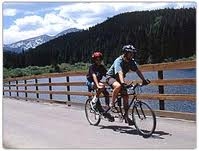By NCHPAD
Recruitment is one of the biggest challenges that I have noticed regarding physical activity programs for people with disabilities. I experienced this first hand several years ago, when I was developing adaptive sports and exercise programs for students with disabilities at Kent State University. I remember I was very excited for the opportunity to provide such programs to students with disabilities, and also to have have students try activities that they did not think they could do, or that they knew existed.
With the help of the fitness coordinator and student disability services, I was able to set up a variety of adaptive programs – chair aerobics, yoga, aquatics, archery, rock climbing, skiing and an introduction to wheelchair basketball. I assumed that once these activities were available, students would be lining up to join. The truth was, hardly any of the students voluntarily signed up for any of the programs, and the rest had to be encouraged.
Some students are simply not interested in these types of activities, but others, I believe, just had a lack of knowledge – not knowing these programs exist, and not knowing that they can participate in sports and exercise activities even if they do have a physical disability. Also, sports and exercise are generally introduced early to children. But due to the competitive nature of sports, children with disabilities often don’t get to reap the benefits of physical activity at all, or are exposed to them much later in their lives.

Temple University in Philadelphia, PA has one of the most creative programming ideas that I’ve come across. It’s called the Workout Buddy Program, and is one of many available from their Adaptive Recreation Department. The goal of the Workout Buddy Program is to provide an opportunity for students with disabilities to experience various sports and exercise activities. Students with disabilities who want to participate are partnered up with a fellow student/volunteer, and they participate together in whatever activity they choose – tandem walking/jogging, handcycling, aquatics, weight traning, cardiovascular conditioning, etc.
Since many individuals with disabilities are not aware of adaptive sports/recreation programs, there needs to be introductory programs that expose young individuals with disabilities to various physical activities. This group also needs to learn about how exercise and sports can benefit them physically and emotionally, and understand that participating in physical activity improves their health and wellbeing. Universities and colleges in particular should be providing such programs for their students since the setting is ideal for fostering new experiences and self-growth.
What other ways can colleges and universities encourage students with disabilities to join sports, exercise, or recreation programs? Also, should there be more focus on attitudinal change from the nondisabled student population?